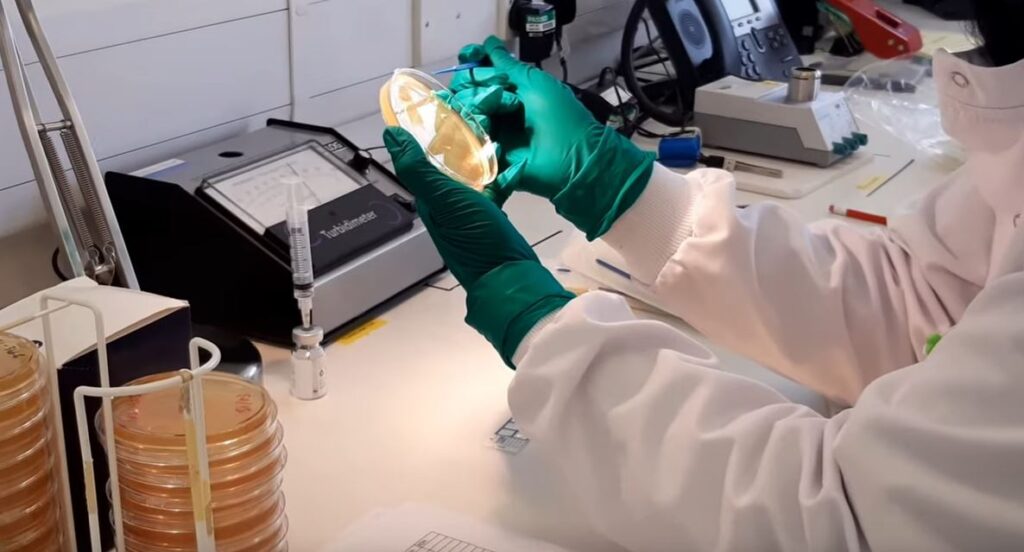Medical advancement: Building better bone grafts

Bacteriologist taking a bacterial culture from a Petri dish. Image: Tim Sandle
Some 2.2 million bone-grafting procedures are performed worldwide, including autografting, a process which uses the patient’s own bone for tooth implantation and to repair and reconstruct parts of the mouth, face and skull.
There are some drawbacks to autografting, including the need for additional surgery, longer recovery time, complication risks and the availability of larger amounts of bone.
To address these, researchers at the University of Michigan School of Dentistry are seeking to build a better bone graft in the laboratory.
The researchers previously created a technology that makes bone scaffolds with collagen-like nanostructures, micrometre-sized pores and natural shapes. For the next phase, the researchers have regenerated bone by improving cell-matrix interactions. This has been led by Peter Ma, professor of dentistry.
The discovery should be beneficial for patients needing repairs involving larger amounts of bone. This grew out of a collaboration between the Ma Lab and Franceschi Lab. The team applied for U.S. and international patents of peptide-containing copolymers, nanofiber and implantable and injectable 3D scaffolds for bone, and other related tissue regeneration that can bring many benefits.
“Having a predictable source of materials to regenerate the bone means much more reliable procedures,” Ma says. “What is most important is that we can regenerate tissues without introducing exogenous cells, which would potentially complicate the therapies by triggering immune response. The exciting outcome is that our new approach can regenerate about eight times more bone than a scaffold without the special peptides on nanofibers.”
As well as autografting, the new grafting procedure could replace other approaches like allografting, which uses donor tissue, and xenografting, which use animal tissue. Both come with risks such as infection and lack of availability.
In terms of the science, Ma explains: “What we invented are biodegradable polymer templates that contain peptides on nanofibers, acting like keys to open new gates to liberate the locked bone regeneration potential from the recipient’s own cells. After the regeneration of pre-designed 3D bone tissue, the materials will degrade and disappear without potential long-term complications”.
The research appears in the journal Bioactive Materials and it is titled “Synthetic helical peptides on nanofibers to activate cell-surface receptors and synergistically enhance critical-sized bone defect regeneration”.
Medical advancement: Building better bone grafts
#Medical #advancement #Building #bone #grafts





